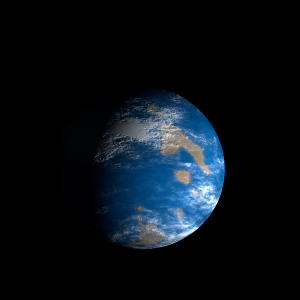|
|
Space Astro
|
Info for exoplanet "Orpaaa"
| Scientific (actual) data |
|---|
| Name | Kepler-1218 b |
| Planet status | Confirmed |
| Radius | 0.128 |
| Orbital period | 22.9221 |
| Discovered | 2016 |
| Updated | 2021-02-05 |
| Tconj | 2454970 |
| Publication | Announced on a website |
| Detection type | Primary Transit |
| Alternate names | 2MASS J19261895+4431541 b, K02389.01, KIC 8494617 b, KOI-2389 b, KOI-2389.01, WISE J192618.93+443154.0 b |
| Star name | Kepler-1218 |
| Right ascension | 291.58° |
| Declination | 44.53° |
| Mag j | 12.501 |
| Mag h | 12.227 |
| Mag k | 12.177 |
| Star distance | 667 |
| Star metallicity | -0.02 |
| Star mass | 1.06 |
| Star radius | 1.1 |
| Star age | 3.8 |
| Star temperature | 5986 |
| Star alternate names | 2MASS J19261895+4431541, KIC 8494617, KOI-2389, WISE J192618.93+443154.0 |
| Wikipedia article | Kepler-1218 b |
Back
| |
| Fictional info (?) |
|---|
| Suggested name | Orpaaa |
| Planet type | Cold planet |
|
The surface of this dark planet is crowded with strange but terraformed bacteria called the "Raxnixae". They spend their life by finding nourishment in plants at night. They are believed to be related to the Makalyke but with 5 eyes and vary in size from 60 to 100 cm. Most Raxnixae can withstand temperatures from 60 to 110°C but are killed by severe infection which is common on this planet. |
| Estimated population | 4000000 |
| Atmosphere | Oxygen | 49% |
| Carbon dioxide | 49% |
| Water | 0.89% |
| Methane | 0.0021% |
| Atmospheric pressure | 0.001 bar |
 |
| No known satellites |
| Google search for Orpaaa |
|
Website by Joachim Michaelis
|
|
|
|